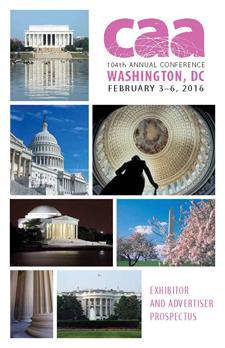
To herald Fair Use Week, we’re recalling some of the ways in which creating codes of best practices has changed what people can make and say for the better:
ARTISTS: When the College Art Association (CAA), the largest membership organization representing the visual arts community, released the Code of Best Practices in Fair Use for the Visual Arts in February 2015, visual arts professionals were locked into a permissions culture that delayed their work, raised costs, and most importantly, stifled imagination. Today, only a year later, more than 2/3 of CAA members know about the code, and many have told others or taught the code.
 Rebekah Modrak, an artist who teaches at the University of Michigan, is one of them. She created art that incorporated copyrighted material. Her work creating an imaginary company Re Made Co. spoofed the overexemplifying hipster-Brooklyn site Best Made Co. Watch the side-by-side video of Best Made’s ad for an artisanal axe and Re Made’s version promoting a plunger. (You’re welcome.)
Rebekah Modrak, an artist who teaches at the University of Michigan, is one of them. She created art that incorporated copyrighted material. Her work creating an imaginary company Re Made Co. spoofed the overexemplifying hipster-Brooklyn site Best Made Co. Watch the side-by-side video of Best Made’s ad for an artisanal axe and Re Made’s version promoting a plunger. (You’re welcome.)
After getting a cease-and-desist letter, she turned for advice to CAA, which steered her to good legal advice at University of Michigan. Her university’s lawyers welcomed the opportunity to support her fair uses.
She then published a recounting of her experience for a Routledge publication; she used the Code to convince the Routledge editors that fair use would apply to reproduction of images of her own art.
FILMMAKERS: In 2005 when documentary filmmakers decided to create a Documentary Filmmakers Statement of Best Practices in Fair Use, the field was stuck in the expectation that all quoted material from other sources would have to be cleared. No one was sure what the law actually allowed. But once filmmakers declared what appropriate fair use would be in the most common situations where they needed it, the ambiguity—and the calculated risk—went way, way down. So low, in fact, that every insurer in the U.S. for errors and omissions insurance—a required insurance for filmmakers—reversed its standard policies and began accepting fair use claims within the terms of the Statement.
These days, filmmakers routinely employ fair use, in films like Barbara Kopple’s Gun Crazy, Dawn Porter’s Trapped, and Alex Gibney’s Going Clear: Scientology and the Prison of Belief. Gibney’s Scientology film could not have been made, or even imagined, if he didn’t have access to fair use; Scientology officials would not grant him permission for what they already knew would not be favorable to them.
MEDIA LITERACY TEACHERS: Before they created their 2008 Code of Best Practices in Fair Use for Media Literacy Education, media literacy teachers would sneak materials into the classroom, prohibit students from making remixes, and they often gave up on ambitious digital projects or sharing curriculum. After they had a code, they were able to change standards in schools and at contests for student work, and to do better teaching.
One of those teachers is David Cooper Moore, an early user of the Code, who says that “students are easily able to grasp fair use concepts, and it can often improve the quality of their work. When students ask not just whether they can use copyrighted material, but WHY they should use the copyrighted material, they ask questions about creative choices that always seem to deepen their own creative work.”
MORE: More stories are told in Reclaiming Fair Use: How to Put Balance Back in Copyright, and of course in the CMSI blog!
